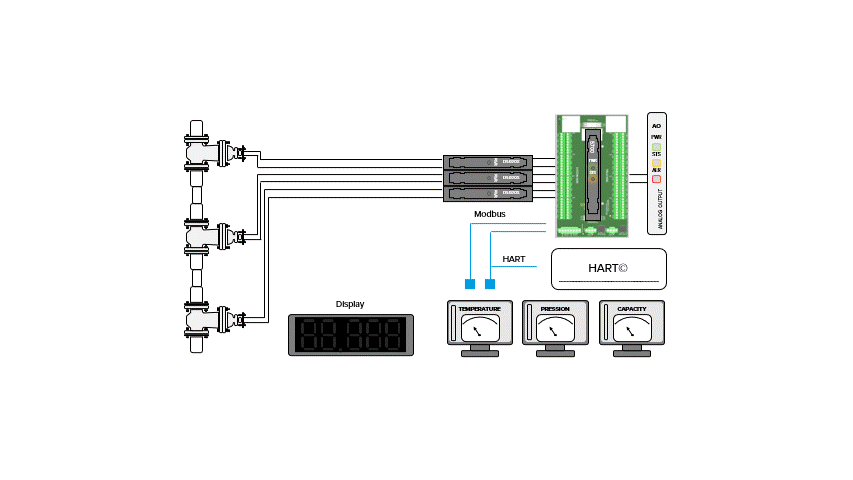GM International products, including D5000 intrinsically safe isolators, Hart 5700-110 Multiplexer, and TBE-D5001-HRT-004 termination boards were chosen by a customer for a pilot project.
The aim was to find a flexible solution that would have allowed the creation of a redundant monitoring network for a valve control system utilizing a single AO signal to drive multiple devices. The application was tested and performed on a sample of three valves, although a single AO signal could control more valves.
CHALLENGE
The customer sought a solution to obtain local diagnostics while simultaneously enabling remote monitoring of methane gas pressure control valves. The Customer’s installations were in remote areas, where the pressure of the methane gas is reduced in order to distribute the methane pipelines that supply the cities. Pressure reduction cabins were then installed in the cities for local distribution. These valves (typically two or three per line) were locally controlled without any connection for remote monitoring. The goal was to find a solution that enabled on-site diagnostics and remote monitoring.
SOLUTION
A redundant valve control system was established by connecting a single 4-20mA signal (Safety PLC, AO board) simultaneously to three Fisher Fieldvue DVC6200 digital valve controllers. The Hart Multiplexer collects data from 4-20mA signals with the superimposed Hart protocol, retaining more parameters than the simple 4-20mA signal, corresponding to actuator positioning. The Hart protocol was primarily utilized for diagnostics, and the use of a Multiplexer made all information available to Emerson AMS at one local PC station. Moreover, through a complex and protected Ethernet network, the objective was to transmit the diagnostic data, captured by the GMI HART Multiplexer, to a central data collection station located several hundred kilometers away from the installation site of the devices.
The single termination board, to which the Hart Multiplexer was connected, supported up to thirty-two independent signals. However, the number of channels could be extended up to 256, by connecting other termination boards in "Daisy Chain" mode. This specific pilot application must ensure that a single AO signal, connected on the system side to multiple inputs of the termination board, could drive numerous valves. These valves were positioned in the Hazardous Area and separated from the safe area by an equivalent number of D5020S intrinsic safety barriers connected to the output on the field side of the same termination board. The 5700-110 Hart Multiplexer retrieved the Hart signal from the three tubes and display real-time parameters in the AMS software. Examples of parameters include dirty air supply, outside air leak, stuck valve, and broken actuator spring. Since the application was in Dangerous Area (Zone 0), the connection had to be protected by GMI I.S. isolators that limited the energy in the dangerous area within the ignition value of methane. The GMI I.S. isolators transparently transmit the Hart protocol along the control loop.

BENEFITS
The customer obtained a complete diagnostic of the three loops in a single PC, thanks to the Hart Multiplexer compatible with the AMS software. Furthermore, the customer was exploring the opportunity to extend the communication of these remote sites to a centralized control station via an Ethernet network, enabling constant monitoring of the loops even over a great distance. The application initially involved three valves but could potentially be expanded to more valves. GM International provided a flexible solution, completed with I.S. isolators that provided the simplest and most cost-effective means of implementing intrinsic safety in hazardous area applications. The Hart Multiplexer system reduced the complexity and cost of HMS installations, significantly decreased the required number of modules and enhanced the speed (baud rate) of the system.


